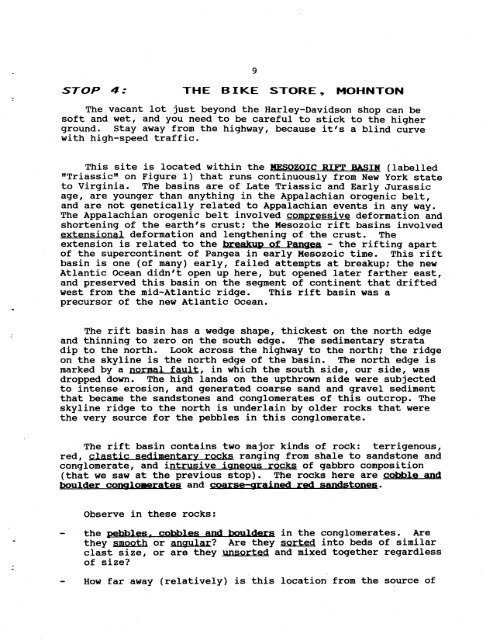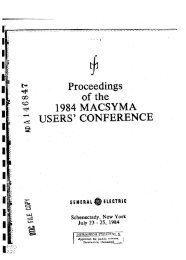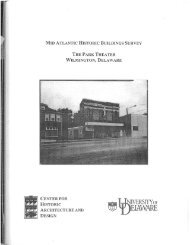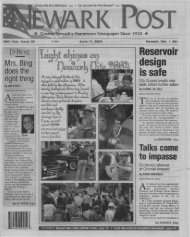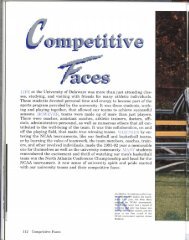FTELD TRIP ACROSS THE APPALACHTAN OROGENIC BELT
FTELD TRIP ACROSS THE APPALACHTAN OROGENIC BELT
FTELD TRIP ACROSS THE APPALACHTAN OROGENIC BELT
Create successful ePaper yourself
Turn your PDF publications into a flip-book with our unique Google optimized e-Paper software.
STOP 4:<br />
9<br />
<strong>THE</strong> BIKE STORE', MOHNTON<br />
The vacant lot just beyond the Harley-Davidson shop can be<br />
soft and wet, and you need to be careful to stick to the higher<br />
ground. Stay away from the highway, because itts a blind curve<br />
with high-speed traffic.<br />
This site is located within the IIESOZOIC RIFT BASIil (labelled<br />
rrTriassictr on Figure L ) that runs continuously from New York state<br />
to Virginia. The basins are of Late Triassic and Early Jurassic<br />
n9€r are younger than anything in the Appalachian orogenic be1t,<br />
and are not genetically related to Appalachian events in any way.<br />
The Appalachian orogenic belt involved compressive deformation and<br />
shortening of the earth's crust; the Mesozoic rift basins involved<br />
extensional deformation and lengthening of the crust. The<br />
extension is related to the breqlsup of Pangea - the rifting apart<br />
of the supercontinent of Pangea in early l.lesozoic tine. This rift<br />
basin is one (of rnany) early, failed attenpts at breakup; the new<br />
Atlantic Ocean didn't open up here, but opened later farther east,<br />
and preserved this basin on the segnent of continent that drifted<br />
west from the nid-Atlantic ridge. This rift basin was a<br />
precursor of the new Atlantic ocean.<br />
The rift basin has a wedge shape, thickest on the north edge<br />
and thinningr to zero on the south edge. The sedimentary strata<br />
dip to the north. Look across the highway to the north; the ridge<br />
on the skyline is the north edge of the basin. The north edge is<br />
marked by a norrnal f4ult, in which the south side, our side, yras<br />
dropped down. The high lands on the upthrown side were subjected<br />
to intense erosion, and generated coarse sand and gravel sediment<br />
that becarne the sandstones and conglomerates of this outcrop. The<br />
skyline ridge to the north is underlain by older rocks that were<br />
the very source for the pebbles in this conglomerate.<br />
The rift basin contaLns two rnajor kinds of rock: terrigenous,<br />
red, clastic sedinentary rocks ranging fron shale to sandstone and<br />
conglomerate, and intrusive igneous rocks of gabbro composition<br />
(that we saw at the previous stop). The rocks here are cobble and<br />
boulder corxrlorcrates and cq?rse:grrained rFd sandstones.<br />
observe in these rocks:<br />
the in the conglomerates, Are<br />
they snooth or angUlAr? Are they sorted into beds of sinilar<br />
clast sizer oF are they rlnsorted and mixed together regardless<br />
of size?<br />
How far alray (relatively) is this location from the source of


